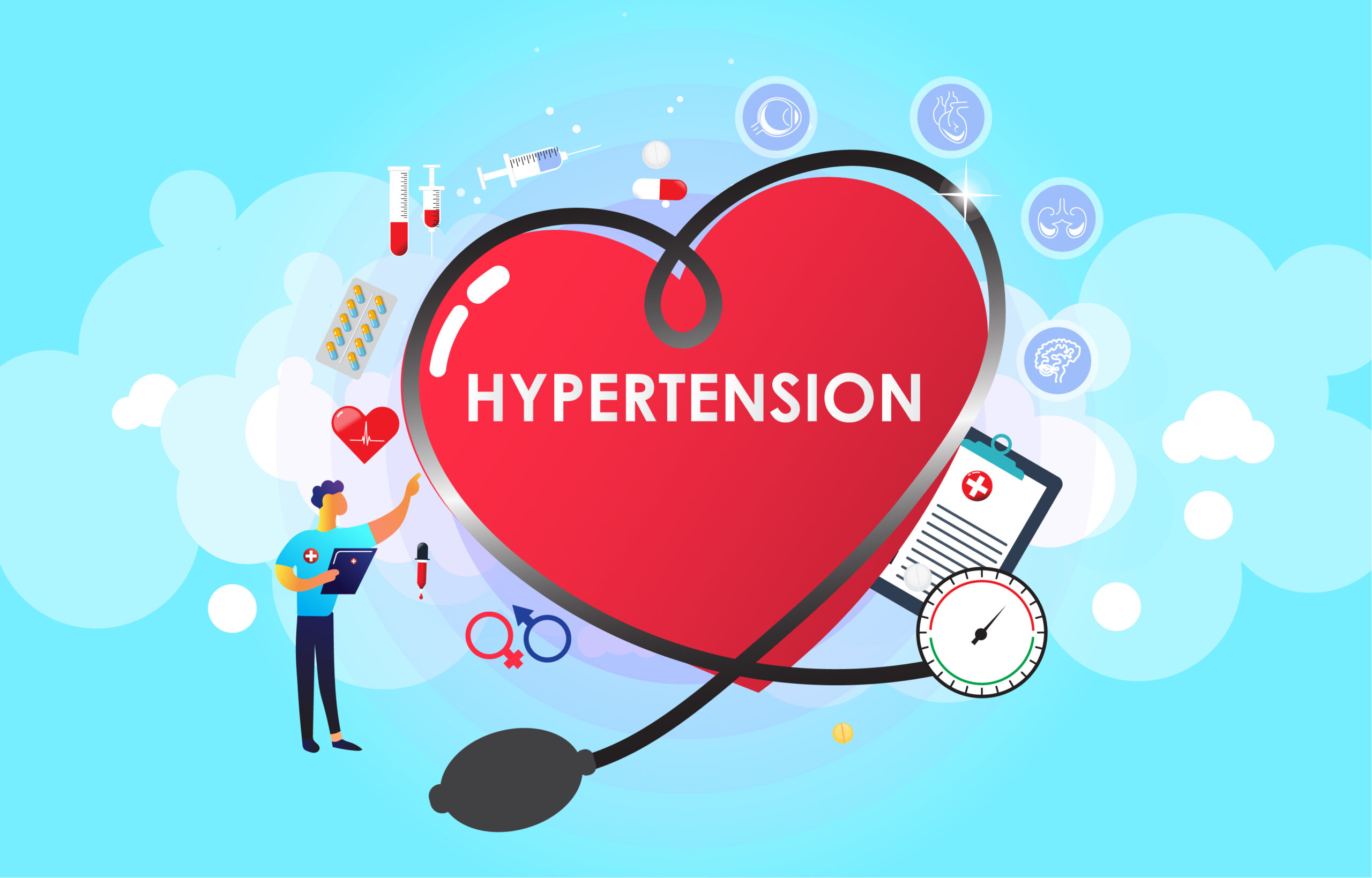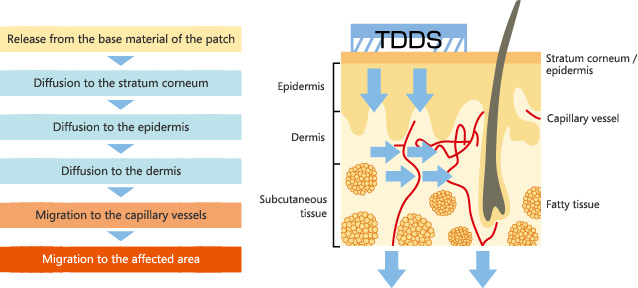Inhalational Anesthetics
- A wide variety of gases and volatile liquids can produce anesthesia. One of the troublesome properties of the inhalational anesthetics is their low safety margin. The inhalational anesthetics have therapeutic indices (LD50/ED50) that range from 2 to 4, making these among the most dangerous drugs in clinical use.
- It is essential to understand that inhalational anesthetics distribute between tissues (or between blood and gas) such that equilibrium is achieved when the partial pressure of anesthetic gas is equal in the two tissues. When a person has breathed an inhalational anesthetic for a sufficiently long time that all tissues are equilibrated with the anesthetic, the partial pressure of the anesthetic in all tissues will be equal to the partial pressure of the anesthetic in inspired gas.
PHARMACOKINETICS
Uptake & Distribution of Inhaled Anesthetics
- The concentration of an inhaled anesthetic in a mixture of gases is proportional to its partial pressure (or tension).
- Achievement of a brain concentration of an inhaled anesthetic necessary to provide an adequate depth of anesthesia requires transfer of the anesthetic from the alveolar air to the blood and from the blood to the brain.
- The rate at which a therapeutic concentration of the anesthetic is achieved in the brain depends primarily on
- Solubility of anesthetic
- Concentration of anesthetic in the inspired air
- Volume of pulmonary ventilation
- Pulmonary blood flow
- Partial pressure gradient between arterial and mixed venous blood anesthetic concentrations.
Solubility
- The blood: gas partition coefficient is a useful index of solubility and defines the relative affinity of an anesthetic for the blood compared with that of inspired gas. The partition coefficients for desflurane and nitrous oxide, which are relatively insoluble in blood, are extremely low. When an anesthetic with low blood solubility diffuses from the lung into the arterial blood, relatively few molecules are required to raise its partial pressure, and therefore the arterial tension rises rapidly
- Anesthetics with moderate-to-high solubility (eg, halothane, isoflurane), more molecules dissolve before partial pressure changes significantly, and arterial tension of the gas increases less rapidly
- For example, for a given concentration or partial pressure of the two anesthetic gases in the inspired air, it will take much longer for the blood partial pressure of the more soluble gas (halothane) to rise to the same partial pressure as in the alveoli. Since the concentration of the anesthetic agent in the brain can rise no faster than the concentration in the blood, the onset of anesthesia will be slower with halothane than with nitrous oxide.
Anesthetic Concentration in the Inspired Air
- Increases in the inspired anesthetic concentration increase the rate of induction of anesthesia by increasing the rate of transfer into the blood according to Fick’s law.
- Advantage is taken of this effect in anesthetic practice with inhaled anesthetics that possess moderate blood solubility (eg, enflurane, isoflurane, and halothane). For example, a 1.5% concentration of isoflurane may be administered initially to increase the rate of rise in the brain concentration; the inspired concentration is subsequently reduced to 0.75–1% when an adequate depth of anesthesia is achieved.
- In addition, these moderately soluble anesthetics are often administered in combination with a less soluble agent (eg, nitrous oxide) to reduce the time required for loss of consciousness and achievement of a surgical depth of anesthesia.
Pulmonary Ventilation
- The rate of rise of anesthetic gas tension in arterial blood is directly dependent on both the rate and depth of ventilation.
- For example, a fourfold increase in ventilation rate almost doubles the arterial tension of halothane during the first 10 minutes of administration but increases the arterial tension of nitrous oxide by only 15%. Therefore, hyperventilation increases the speed of induction of anesthesia with inhaled anesthetics that would normally have a slow onset. Depression of respiration by opioid analgesics slows the onset of anesthesia of inhaled anesthetics unless ventilation is manually or mechanically assisted.
Pulmonary Blood Flow
- An increase in pulmonary blood flow (ie, increased cardiac output) slows the rate of rise in arterial tension, particularly for those anesthetics with moderate-to-high blood solubility. Increased pulmonary blood flow exposes a larger volume of blood to the anesthetic agent in the alveoli, thereby increasing the blood carrying capacity and decreasing the rate of rise in the anesthetic tension in the blood (and brain).
- In patients with circulatory shock, the combined effects of decreased cardiac output (resulting in decreased pulmonary flow) and increased ventilation will accelerate induction of anesthesia with halothane and isoflurane. However, this effect is much less important with the less soluble agent’s sevoflurane, nitrous oxide, and desflurane
Arteriovenous Concentration Gradient
- The anesthetic concentration gradient between arterial and mixed venous blood is dependent mainly on uptake of the anesthetic by the tissues, including nonneural tissues. Depending on the rate and extent of tissue uptake, venous blood returning to the lungs may contain significantly less anesthetic than arterial blood. The greater this difference in anesthetic gas tensions, the more time it will take to achieve equilibrium with brain tissue.
- During the induction phase of anesthesia (and the initial phase of the maintenance period), the tissues that exert greatest influence on the arteriovenous anesthetic concentration gradient are those that are highly perfused (eg, brain, heart, liver, kidneys, and splanchnic bed). These tissues receive over 75% of the resting cardiac output. In the case of volatile anesthetics with relatively high solubility in highly perfused tissues, venous blood concentration will initially be very low, and equilibrium with the arterial blood is achieved slowly.
- Muscle and skin constitute 50% of the total body mass, anesthetics accumulate more slowly in these tissues than in highly perfused tissues (e.g., brain) because they receive only one-fifth of the resting cardiac output. Although most anesthetic agents are highly soluble in adipose (fatty) tissues, the relatively low blood perfusion to these tissues delays accumulation, and equilibrium is unlikely to occur with most anesthetics during a typical 1- to 3-hour operation.
Measurement of Anesthetic Potency
- The potency of general anesthetic agents usually is measured by determining the concentration of general anesthetic that prevents movement in response to surgical stimulation. For inhalational anesthetics, anesthetic potency is measured in MAC units, with 1 MAC defined as the minimum alveolar concentration that prevents movement in response to surgical stimulation in 50% of subjects.
Elimination
- The time to recovery from inhalation anesthesia depends on the rate of elimination of the anesthetic from the brain. Many of the processes responsible for transfer of the anesthetic during the recovery phase are simply the reverse of those that occur during the introduction of the anesthetic agent.
- One of the most important factors governing rate of recovery is the blood: gas partition coefficient of the anesthetic agent.
- Other factors controlling rate of recovery include the pulmonary blood flow, the magnitude of ventilation, and the tissue solubility of the anesthetic.
- Two features of the recovery phase are different from induction of anesthesia.
- First, transfer of an anesthetic from the lungs to blood can be enhanced by increasing its concentration in inspired air, while the reverse transfer process cannot be enhanced because the concentration in the lungs cannot be reduced below zero.
- Second, at the beginning of the recovery phase, the anesthetic gas tension in different tissues may be quite variable, depending on the specific agent and the duration of anesthesia.
- Inhaled anesthetics that are relatively insoluble in blood (i.e., possess low blood: gas partition coefficients) and brain are eliminated at faster rates than the more soluble anesthetics. The washout of nitrous oxide, desflurane, and sevoflurane occurs at a rapid rate, leading to a more rapid recovery from their anesthetic effects compared with halothane and isoflurane.
- Halothane is approximately twice as soluble in brain tissue and five times more soluble in blood than nitrous oxide and desflurane; its elimination therefore takes place more slowly, and recovery from halothane- and isoflurane-based anesthesia is predictably less rapid.
- Clearance of inhaled anesthetics via the lungs is the major route of elimination from the body. However, hepatic metabolism may also contribute to the elimination of some volatile anesthetics.
- Over 40% of inspired halothane is metabolized during an average anesthetic procedure, whereas less than 10% of enflurane is metabolized over the same period. Oxidative metabolism of halothane results in the formation of trifluoroacetic acid and release of bromide and chloride ions. Under conditions of low oxygen tension, halothane is metabolized to the chlorotrifluoroethyl free radical, which is capable of reacting with hepatic membrane components and on rare occasion has resulted in halothane-induced hepatitis
PHARMACODYNAMICS
- The inhalational anesthetics inhibit excitatory synapses and enhance inhibitory synapses in various preparations. These effects likely are produced by both pre- and postsynaptic actions of the inhalational anesthetics. The inhalational anesthetic isoflurane clearly can inhibit neurotransmitter release, while the small reduction in presynaptic action potential amplitude produced by isoflurane (3% reduction at MAC concentration) substantially inhibits neurotransmitter release
- Chloride channels gated by the inhibitory GABAA receptors are sensitive to clinical concentrations of a wide variety of anesthetics, including the halogenated inhalational agents.
- Clinical concentrations of inhalational anesthetics enhance the capacity of glycine to activate glycine-gated chloride channels (glycine receptors), which play an important role in inhibitory neurotransmission in the spinal cord and brainstem.
- NMDA receptors are glutamate-gated cation channels that are somewhat selective for calcium and are involved in long-term modulation of synaptic responses (long-term potentiation) and glutamate-mediated neurotoxicity.
- Nitrous oxide, cyclopropane and xenon are potent and selective inhibitors of NMDA-activated currents, suggesting that these agents also may produce unconsciousness by means of actions on NMDA receptors.
- Halogenated inhalational anesthetics activate some members of a class of K+ channels known as two-pore domain channels; other two-pore domain channel family members are activated by xenon, nitrous oxide, and cyclopropane. These channels are located in both pre-synaptic and post-synaptic sites. The post-synaptic channels are important in setting the resting membrane potential of neurons and may be the molecular locus through which these agents hyperpolarize neurons. Activation of pre-synaptic channels can lead to hyperpolarization of the pre-synaptic terminal, thereby reducing neurotransmitter release.
- In principle, general anesthetics could interrupt nervous system function, including peripheral sensory neurons, the spinal cord, the brainstem, and the cerebral cortex.
Organ System Effects of Inhaled Anesthetics
Effects on the Cardiovascular System
- Inhaled anesthetics change heart rate either directly by altering the rate of sinus node depolarization or indirectly by shifting the balance of autonomic nervous system activity. Bradycardia can be seen with halothane, probably because of direct vagal stimulation. In contrast, enflurane, and sevoflurane have little effect, and both desflurane and isoflurane increase heart rate. In the case of desflurane, transient sympathetic activation with elevations in catecholamine levels can lead to marked increases in heart rate and blood pressure when high inspired gas concentrations are administered.
Effects on the Respiratory System
- Except for nitrous oxide, all inhaled anesthetics in current use cause a dose-dependent decrease in tidal volume and an increase in respiratory rate. However, the increase in respiratory rate is insufficient to compensate for the decrease in volume, resulting in a decrease in minute ventilation. All volatile anesthetics are respiratory depressants, as indicated by a reduced response to increased levels of carbon dioxide. The degree of ventilatory depression varies among the volatile agents, with isoflurane and enflurane being the most depressant. All volatile anesthetics in current use increase the resting level of PaCO2
- The bronchodilating action of halothane and sevoflurane makes them the induction agents of choice in patients with underlying airway problems (eg, asthma, bronchitis, chronic obstructive pulmonary disease). Airway irritation, which may provoke coughing or breath-holding, is rarely a problem with halothane and sevoflurane. However, the pungency of desflurane makes this agent less suitable for induction of anesthesia despite its low blood:gas partition coefficient.
Effects on the Brain
- Inhaled anesthetics decrease the metabolic rate of the brain. Nevertheless, the more soluble volatile agents increase cerebral blood flow because they decrease cerebral vascular resistance. The increase in cerebral blood flow is clinically undesirable in patients who have increased intracranial pressure because of a brain tumor or head injury. Volatile anesthetic-induced increases in cerebral blood flow increase cerebral blood volume and further increase intracranial pressure. Of the inhaled anesthetics, nitrous oxide is the least likely to increase cerebral blood flow.
Effects on the Kidney
- Depending on the concentration, volatile anesthetics decrease the glomerular filtration rate and renal blood flow and increase the filtration fraction.
Effects on the Liver
- Volatile anesthetics cause a concentration-dependent decrease in hepatic blood flow
Effects on Uterine Smooth Muscle
- Nitrous oxide appears to have little effect on uterine musculature. However, the halogenated anesthetics are potent uterine muscle relaxants and produce this effect in a concentration-dependent fashion.
TOXICITY
Hepatotoxicity
- Postoperative hepatic dysfunction is typically associated with factors such as blood transfusions, hypovolemic shock, and other surgical stresses rather than volatile anesthetic toxicity.
- Serum from patients with halothane hepatitis contains a variety of autoantibodies against hepatic proteins. Trifluoroacetylated (TFA) proteins in the liver could be formed in the hepatocyte during the biotransformation of halothane by liver drug-metabolizing enzymes.
Nephrotoxicity
- Metabolism of methoxyflurane, enflurane, and sevoflurane leads to the formation of fluoride ions, and this has raised questions concerning the potential nephrotoxicity of these three volatile anesthetics. Changes in renal concentrating ability have been observed with prolonged exposure to both methoxyflurane and enflurane but not sevoflurane
Malignant Hyperthermia
- Malignant hyperthermia is an autosomal dominant genetic disorder of skeletal muscle that occurs in susceptible individuals undergoing general anesthesia with volatile agents and muscle relaxants (eg, succinylcholine). The malignant hyperthermia syndrome consists of the rapid onset of tachycardia and hypertension, severe muscle rigidity, hyperthermia, hyperkalemia, and acid-base imbalance with acidosis that follows exposure to one or more of the triggering agents
- Treatment includes administration of dantrolene (to reduce calcium release from the sarcoplasmic reticulum) and appropriate measures to reduce body temperature and restore electrolyte and acid-base balance
Chronic Toxicity
- Under normal conditions, inhaled anesthetics (including nitrous oxide) are neither mutagens nor carcinogens in patients.
- Prolonged exposure to nitrous oxide decreases methionine synthase activity and theoretically can cause megaloblastic anemia, a potential occupational hazard for staff working in inadequately ventilated dental operating suites.
Individual anesthetic agents
1.Halothane:
- no longer widely used
- potent, non-irritant
- blood: gas partition coefficient is 2.4 and oil: gas coefficient is 220
- Minimum alveolar concentration is 0.8 % v/v
- may cause hypotension and dysrhythmias; about 30% metabolised
- can be useful when slow recovery is desirable but otherwise the ‘hangover’ due to high lipid solubility is unwanted
- because of its potential for inducing hepatotoxicity, halothane has largely been replaced by newer volatile anaesthetics.
2.Enflurane:
- halogenated anaesthetic like halothane
- less metabolism than halothane, therefore less risk of toxicity
- faster induction and recovery than halothane (less accumulation in fat)
- risk of epilepsy-like seizures.
- blood: gas partition coefficient is 1.9 and oil: gas coefficient is 98
- Minimum alveolar concentration is 0.7 % v/v
3.Isoflurane:
- like enflurane but lacks epileptogenic property
- may precipitate myocardial ischaemia in patients with coronary disease
- irritant to respiratory tract.
- It is typically used for maintenance of anesthesia after induction with other agents because of its pungent odor, but induction of anesthesia can be achieved in < 10 minutes with an inhaled concentration of 3% isoflurane in O2,
- blood: gas partition coefficient is 1.4 and oil: gas coefficient is 91
- Minimum alveolar concentration is 1.2 % v/v
4.Sevoflurane:
- Sevoflurane is widely used, particularly for outpatient anesthesia, because of its rapid recovery profile
- similar to desflurane, with lack of respiratory irritation.
- Well suited for inhalation induction especially in children
- Hepatic metabolism of sevoflurane also produces inorganic fluoride. Serum fluoride concentrations peak shortly after surgery and decline rapidly.
- blood: gas partition coefficient is 0.6 and oil: gas coefficient is 53
- Minimum alveolar concentration is 2.1 % v/v
5.Nitrous oxide:
- low potency, therefore, must be combined with other agents
- It is combined with oxygen to avoid hypoxia
- rapid induction and recovery
- good analgesic properties
- risk of bone marrow depression with prolonged administration
- accumulates in gaseous cavities.
- N2O is frequently used in concentrations of about 50% to provide analgesia and mild sedation in outpatient dentistry.
6.Xenon
- Xenon is an inert gas that first was identified as an anesthetic agent in 1951. It is unlikely to enjoy widespread use because it is a rare gas that cannot be manufactured and must be extracted from air. This limits the quantities of available xenon gas and renders xenon very expensive.
- Xenon exerts its analgesic and anesthetic effects at several receptor systems in the CNS.
- Xenon is extremely insoluble in blood and other tissues, providing for rapid induction and emergence from anesthesia.
- It is sufficiently potent to produce surgical anesthesia when administered with 30% oxygen.



